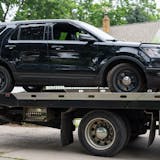Q I have a few years of experience safely driving vehicles with automatic transmissions. However, I would like the opportunity to learn how to drive a manual transmission, even though it may be difficult.
I know of someone who has had experience with stick shifts. The main problem is that I do not know exactly what to say to at least get a civil dialogue going. I am afraid that I may not get the information that I am looking for. Could you please give me some advice on this issue?
A I'm not entirely sure I understand your question. Is it, "How do I find a nice way to ask a friend to teach me how to drive a manual transmission?" Or perhaps a more important question: "How do I ask my friend to allow me to abuse his manual-transmission vehicle as I learn how to shift gears?"
To the first question, just ask this: "If I can come up with a manual-transmission car, will you teach me how to drive it? There's a case of your favorite beverage in it for you."
To the second -- don't ask. If your friend is willing to spend the time teaching you, either rent a car with a manual transmission -- probably a lot more difficult to find than either of us thinks -- or buy an older, inexpensive car with a stick shift and have at it.
Donate it to Courage Center when you're done with it, and if you're sold on shifting gears, buy yourself a fun four-, five- or six-speed car. A new Mazda MX-5 would be fun, don't you think?
Q I have a 2002 Saab 9-5 with a 2.3-liter V4 turbo engine. Since last summer it has shown symptoms of erratic surging by about 200 rpm and pressure fluctuations on the turbo gauge while idling at a stoplight. It happens at 60 miles per hour with cruise control, as well. At high speed, the rpm tends to stay the same, but the turbo-pressure needle swings up and down.
I have changed the fuel pump, spark plugs and fuel filter to eliminate possible fuel-system problems and some but not all vacuum hoses. If I clean the throttle body, the symptoms go away for two or three days and then come back. Could you recommend what I should do to fix this?



